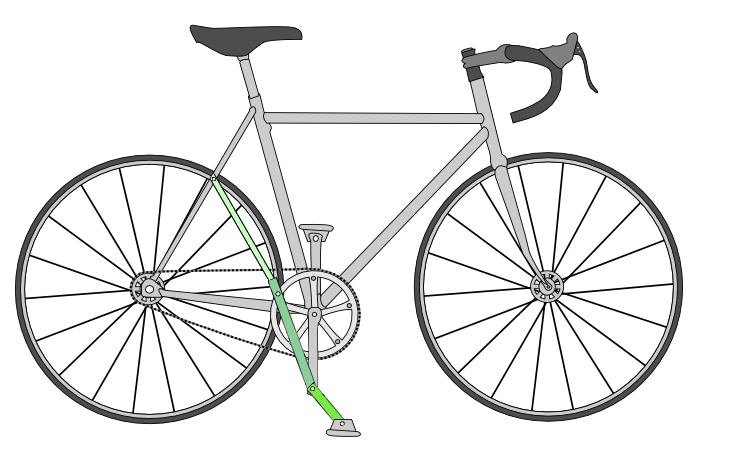Maurice_Houbracken's_bicycle.png (742 × 457 pixels, file size: 124 KB, MIME type: image/png)
A schematic showing a bicycle equipped with Maurice Houbracken's lever (allowing a mechnical advantage of 50%). The image was based on http://upload.wikimedia.org/wikipedia/commons/a/a8/Bicycle_evolution-numbers.svg . The lever consists of 3 parts: the lightgreen arm mounted near the location of the brake, the darker green lever and the fluorescent lever extension. The lever extension is fixed to the darker green lever and can not move independently. It is bent simply to avoid the lever of touching the ground; this part could thus also be made straight if larger wheels are used. The other arms both have 2 bearings meaning that they can move independently. The darker green arm however has the first bearing placed somewhat away from the side (the piece between the side and the bearing isn't filled, but open and has a small beam placedinside it, allowing the lightgreen arm to rotate, but disallowing a rotation further than 180°, or outside the arm).
The length of the darker green arm is 20 cm, the fluorescent green arm is 10 cm and the original pedaling arm is 17 cm.
References: http://www.standaard.be/artikel/detail.aspx?artikelid=022D0M35 , http://web.archive.org/web/20080411031657/http://www.nieuwsblad.be:80/Article/Detail.aspx?articleid=911QD5DB
File history
Click on a date/time to view the file as it appeared at that time.
| Date/Time | Thumbnail | Dimensions | User | Comment | |
|---|---|---|---|---|---|
| current | 10:22, 10 October 2010 |  | 742 × 457 (124 KB) | KVDP (talk | contribs) | A schematic showing a bicycle equipped with Maurice Houbracken's lever (allowing a mechnical advantage of 50%). The image was based on http://upload.wikimedia.org/wikipedia/commons/a/a8/Bicycle_evolution-numbers.svg . The lever consists of 3 parts: the li |
You cannot overwrite this file.
File usage
The following page uses this file:
